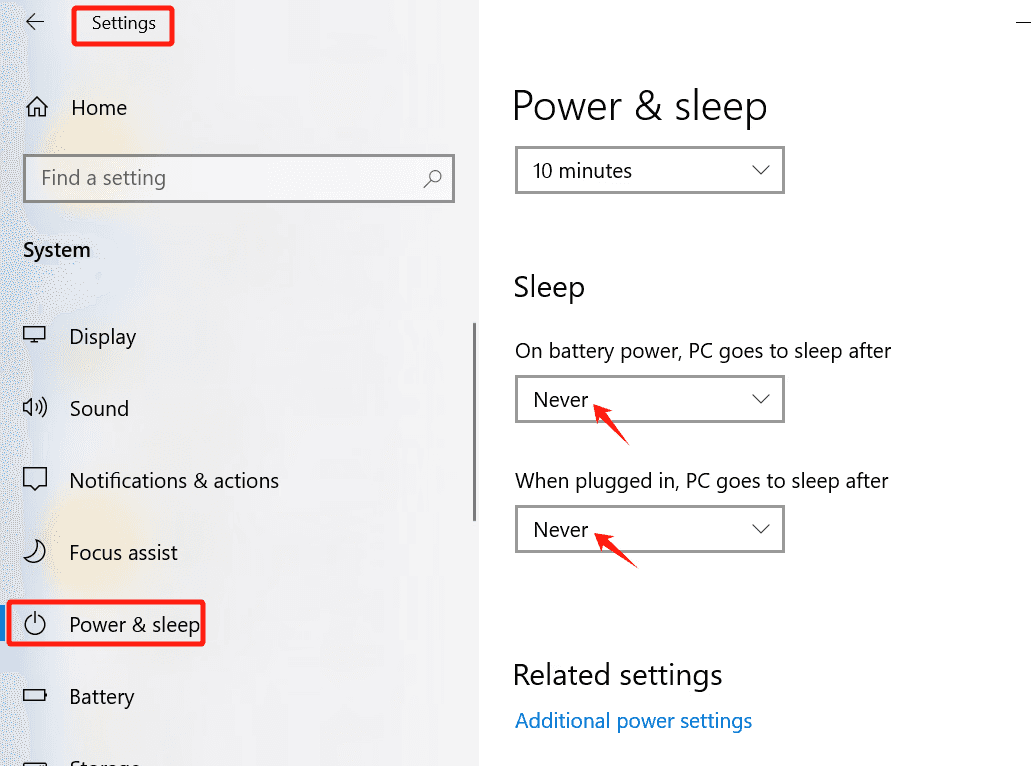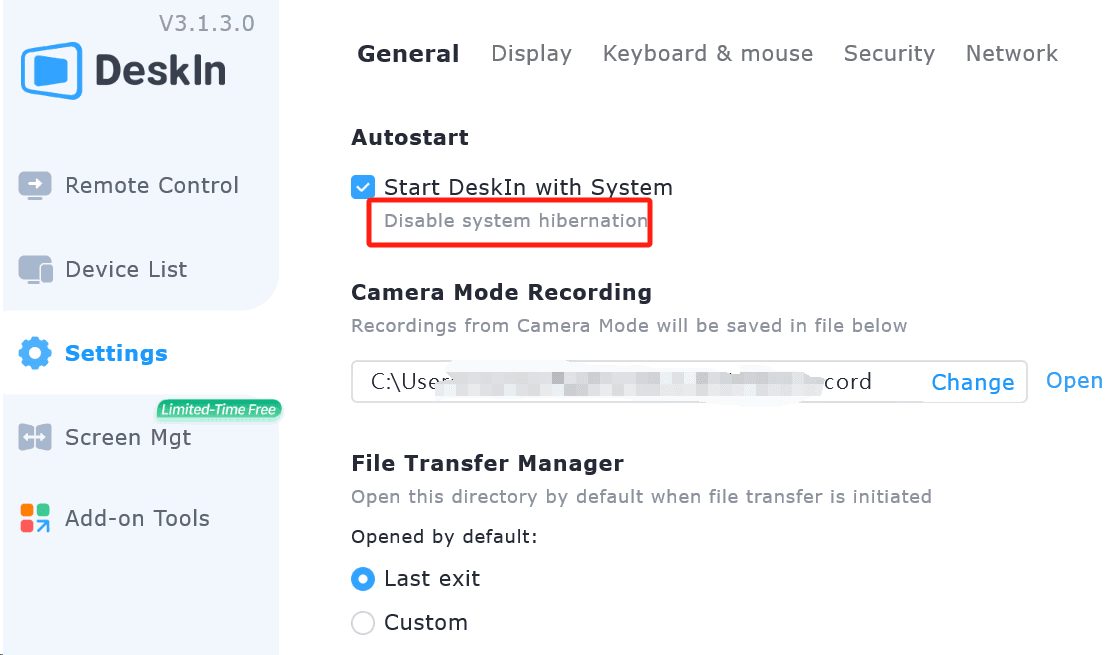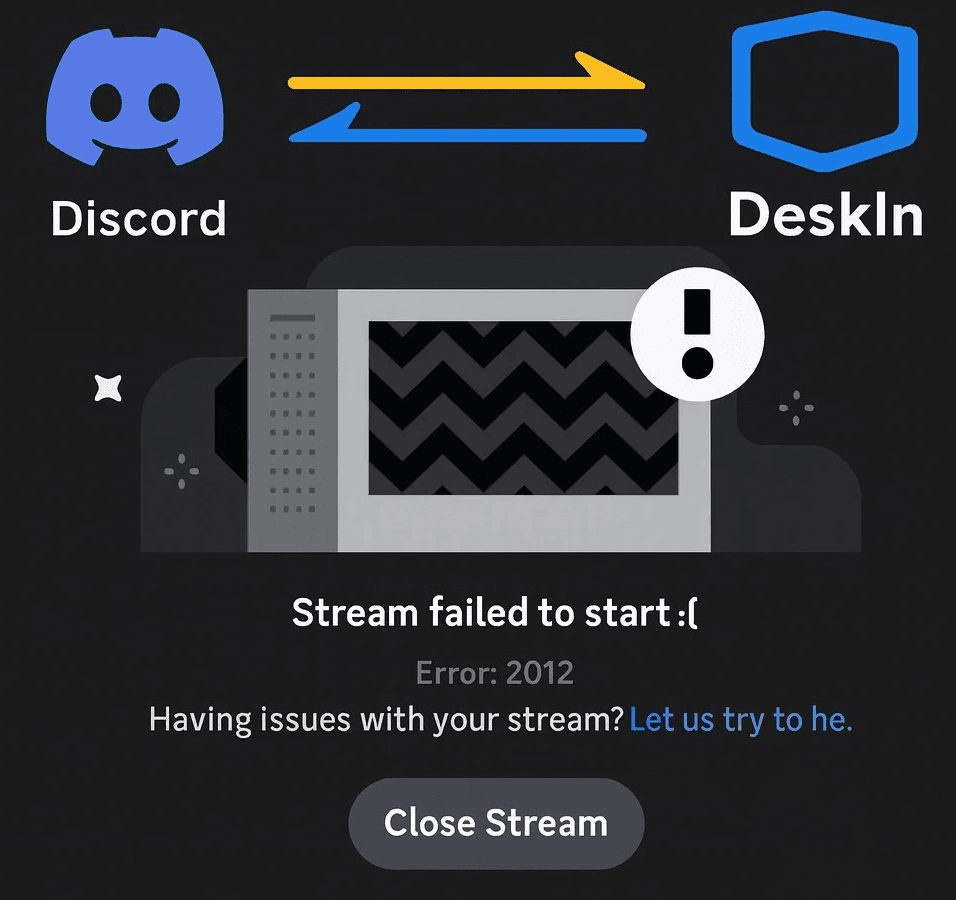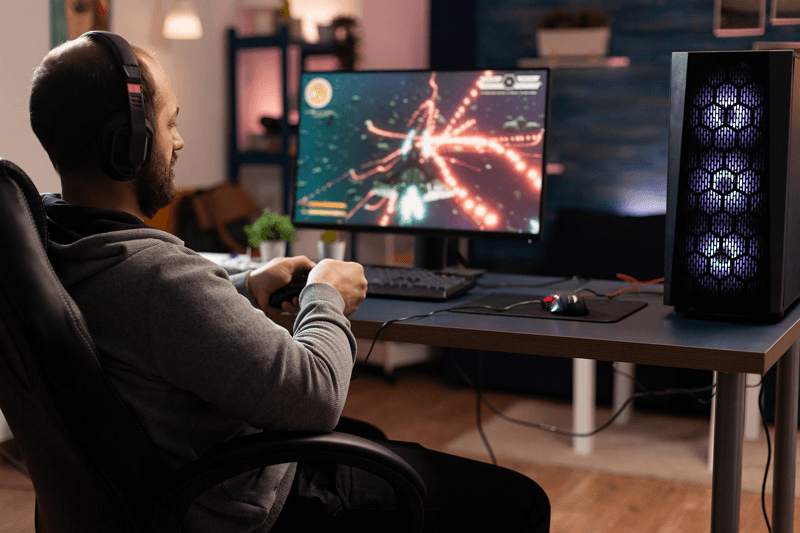Cách Kết Nối Hai Máy Tính Để Sử Dụng Nâng Cao. Xem Ngay 4 Cách Dưới Đây
Bạn đã bao giờ tự hỏi liệu bạn có thể liên kết hai máy tính với nhau để chia sẻ tệp, mở rộng quy trình làm việc của mình, truy cập một máy tính từ xa, hoặc thậm chí biến một chiếc laptop cũ thành thứ hữu ích trở lại? Bạn không đơn độc. Từ các chủ đề trên Reddit đến các diễn đàn công nghệ, người dùng luôn tìm kiếm những cách thực tiễn để kết nối hai máy tính nhằm kiểm soát và sự tiện lợi hơn.
Dù bạn muốn kết nối hai máy tính Windows trên cùng một mạng, truyền dữ liệu giữa các laptop, hoặc sử dụng một máy để quản lý từ xa máy còn lại, có nhiều giải pháp, cả có dây và không dây. Trong hướng dẫn này, chúng tôi sẽ khám phá bốn phương pháp linh hoạt, từ cáp LAN đến các công cụ truy cập từ xa, và giúp bạn chọn giải pháp nào phù hợp nhất với thiết lập của bạn.
Tổng Quan: Các Trường Hợp Sử Dụng Phổ Biến Của Kết Nối Hai PC
Kết nối hai máy tính không chỉ là một thí nghiệm của người đam mê công nghệ — đó là một giải pháp thực tế cho các nhu cầu hàng ngày. Dưới đây là một số lý do phổ biến nhất mà mọi người liên kết hai PC.
Chia Sẻ Tệp Giữa Các PC: Di chuyển nhanh chóng các tệp lớn, thư mục hoặc phương tiện mà không cần dựa vào ổ USB hoặc lưu trữ đám mây.
Làm Việc Từ Xa & Năng Suất Đa Thiết Bị: Sử dụng một thiết bị để điều khiển thiết bị khác, truy cập tệp công việc từ nhà, hoặc mở rộng không gian làm việc kỹ thuật số của bạn.
Hỗ Trợ Từ Xa: Giúp bạn bè, gia đình hoặc đồng nghiệp khắc phục sự cố bằng cách truy cập máy tính của họ từ xa, tiết kiệm thời gian và tránh các hướng dẫn phức tạp qua điện thoại.
Sửa Chữa hoặc Chơi Game Hợp Tác: Chơi các trò chơi nhiều người địa phương, đồng bộ thiết bị cho các thiết lập LAN, hoặc cùng chỉnh sửa tài liệu mà không bị lag.
Sao Lưu và Di Chuyển Hệ Thống: Chuyển dữ liệu khi chuyển sang máy tính mới hoặc sao lưu các tệp quan trọng của bạn ở địa phương giữa các hệ thống.
Dù bạn là người dùng thông thường, game thủ, hay người đang làm việc trên nhiều thiết bị, việc thiết lập một kết nối giữa hai máy tính có thể mở khóa sự linh hoạt và hiệu quả mạnh mẽ.
Phương Pháp 1. Kết Nối Hai PC Qua Chia Sẻ Mạng
Nếu cả hai máy tính của bạn đều đang trên cùng một mạng Wi-Fi, bạn có thể thiết lập chia sẻ mạng để truyền tệp, truy cập thư mục hoặc chia sẻ máy in. Đây là một trong những cách hiệu quả nhất để kết nối hai máy tính không dây trên Windows 10 hoặc 11, đặc biệt cho việc chia sẻ tệp địa phương và sử dụng hợp tác.
📌 Mẹo: Để đảm bảo an toàn, hãy sử dụng tài khoản Windows được bảo vệ bằng mật khẩu và giới hạn quyền truy cập thư mục chia sẻ chỉ cho những người dùng đáng tin cậy. Tránh bật những cài đặt này trên mạng công cộng.
Dưới đây là các bước chi tiết để kết nối hai máy tính qua WiFi:
Bước 1. Đảm bảo cả hai máy tính đều kết nối với cùng một mạng Wi-Fi.
Bước 2. Trên cả hai PC, vào "Cài đặt > Mạng & Internet > Cài đặt mạng nâng cao > Cài đặt chia sẻ nâng cao", và bật "Khám Phá Mạng" và "Chia Sẻ Tệp và Máy In" dưới "Mạng Riêng".
Bước 3. Nhấp chuột phải vào thư mục bạn muốn chia sẻ, vào "Thuộc Tính > Chia Sẻ > Chia sẻ", và chọn người dùng hoặc quyền truy cập.
Bước 4. Trên PC thứ hai, mở "File Explorer", nhấp vào "Mạng", tìm PC đầu tiên, và mở thư mục đã chia sẻ.

Phương Pháp 2. Kết Nối Hai Laptop Không Dây Qua Bluetooth
Nếu bạn chỉ đang truyền các tệp nhỏ và không cần truy cập liên tục, Bluetooth là một giải pháp đơn giản và không dây để kết nối hai laptop hoặc PC lại với nhau. Nó đã được tích hợp vào hầu hết các thiết bị Windows hiện đại và không cần truy cập internet.
Cần lưu ý rằng, mặc dù Bluetooth đơn giản, nó không lý tưởng cho việc truyền tệp lớn hoặc sử dụng liên tục. Nó tốt nhất khi tốc độ không phải là ưu tiên và bạn chỉ cần chia sẻ một vài tài liệu hoặc hình ảnh. Dưới đây là cách hoạt động.
Bước 1. Bật Bluetooth trên cả hai thiết bị qua "Cài đặt > Bluetooth & thiết bị".
Bước 2. Trên một máy tính, nhấp vào "Thêm Bluetooth hoặc thiết bị khác > Bluetooth", sau đó chọn PC còn lại khi nó xuất hiện. Xác nhận mã ghép nối trên cả hai bên.
Bước 3. Để gửi một tệp, nhấp chuột phải vào nó và chọn "Gửi đến > Thiết bị Bluetooth". Ngoài ra, sử dụng ứng dụng Chuyển Tệp Bluetooth tích hợp sẵn trong Windows.

Phương Pháp 3. Kết Nối Hai Máy Tính Bằng Cáp LAN (Ethernet)
Để có kết nối nhanh nhất và ổn định nhất giữa hai PC, đặc biệt là cho việc chuyển tệp lớn hoặc tạo mạng cục bộ, sử dụng cáp Ethernet (LAN) là tùy chọn có dây tốt nhất. Nó không yêu cầu truy cập internet và cung cấp hiệu suất tốc độ cao, mặc dù yêu cầu quyền truy cập vật lý vào cả hai thiết bị và một vài kiến thức cấu hình IP cơ bản.
Dưới đây là hướng dẫn từng bước để kết nối 2 máy tính bằng cáp LAN:
Bước 1. Kết nối cả hai máy tính bằng cáp Ethernet Cat5e hoặc Cat6. Hầu hết các PC hiện đại hỗ trợ tự động phát hiện, vì vậy cáp Ethernet thông thường thường hoạt động.
Bước 2. Bật Chia Sẻ Tệp và Máy In trên cả hai máy thông qua "Cài đặt > Mạng > Cài đặt chia sẻ nâng cao".
Bước 3. Gán địa chỉ IP thủ công:
PC 1: IP = 192.168.0.1, Subnet = 255.255.255.0
PC 2: IP = 192.168.0.2, Subnet = 255.255.255.0
Sử dụng "Bảng Điều Khiển > Trung Tâm Mạng và Chia sẻ > Thay đổi cài đặt adapter", sau đó nhấp chuột phải vào "adapter Ethernet > Thuộc tính > IPv4".
Bước 4. Chia sẻ các thư mục cần thiết và truy cập chúng qua "File Explorer > Mạng" trên PC thứ hai.

Phương Pháp 4. Giải Pháp Tốt Nhất Cho Truy Cập Từ Xa: Sử Dụng DeskIn 🔥
Khi các phương pháp truyền thống như chia sẻ mạng hoặc cáp LAN hoạt động tốt trong các thiết lập cố định, chúng lại thiếu hụt trong các trường hợp sử dụng linh hoạt, hiện đại, như làm việc từ xa, du lịch, hoặc quản lý nhiều máy tính qua các địa điểm. Bluetooth chậm và giới hạn trong các tệp nhỏ, và kết nối LAN hoặc Wi-Fi thường yêu cầu cả hai thiết bị phải ở gần nhau về mặt vật lý, hoặc trên cùng một mạng. Nhưng nếu bạn muốn truy cập an toàn, nhanh chóng và qua nhiều thiết bị?
Đó là lúc một công cụ bên thứ ba mạnh mẽ xuất hiện. DeskIn là một ứng dụng điều khiển từ xa và chuyển tệp hiệu suất cao được thiết kế để nối cầu giữa nhiều thiết bị, mà không bị giới hạn bởi các phương pháp truyền thống. Dù bạn là sinh viên làm việc giữa các laptop, game thủ quản lý hai PC, hay một chuyên gia cần truy cập liền mạch vào các tệp và ứng dụng, DeskIn mang lại điều khiển thời gian thực và chia sẻ tệp với sự ổn định và dễ dàng vô song.
📌 Tính Năng Nổi Bật Của DeskIn:
Điều Khiển Từ Xa Thực Sự: Truy cập và điều khiển máy tính của bạn hoặc máy tính thứ hai từ bất cứ đâu — không cần mạng LAN hoặc mạng chia sẻ.
Chuyển Tệp Nhanh: Gửi tệp lớn (lên đến 12MB/s) một cách an toàn, mà không cần nén hoặc giới hạn kích thước.
Truy Cập Đa Nền Tảng: Hoạt động hoàn hảo trên Windows, macOS, Android và iOS — liên kết máy tính, điện thoại và máy tính bảng của bạn một cách tự do.
Riêng Tư & An Ninh: Bao gồm che màn hình, khóa phiên, và xác minh qua email để giữ cho dữ liệu của bạn an toàn.
Quản Lý Màn Hình: Hỗ trợ các màn hình ảo và mở rộng nhiều màn hình, mang lại cho bạn quyền điều khiển không gian làm việc linh hoạt trong các phiên từ xa.
Công Cụ Hợp Tác: Các tính năng bao gồm đồng bộ hóa bảng t clipboard và truy cập camera từ xa, giúp đa tác vụ, chia sẻ tệp, và giám sát thời gian thực dễ dàng hơn bao giờ hết.
Tối Ưu Cho Điều Kiện Mạng Kém: Ngay cả qua các điểm phát sóng hoặc kết nối không ổn định, DeskIn vẫn giữ được mượt mà và phản hồi.
DeskIn được coi là phần mềm điều khiển máy tính từ xa tốt nhất miễn phí, vì nó có rất nhiều chức năng nâng cao và chỉ yêu cầu thao tác rất đơn giản. Dưới đây là các bước dễ dàng để sử dụng nó để kết nối hai máy tính:
Bước 1. Tải xuống DeskIn trên cả hai máy tính từ trang web chính thức của DeskIn hoặc cửa hàng ứng dụng. Nhấp vào đây để tải xuống.
Bước 2. Tạo và đăng nhập bằng cùng một tài khoản trên cả hai thiết bị.

Bước 3. Sau đó, bạn sẽ thấy ID thiết bị và mật khẩu trên cả hai máy tính. Trên thiết bị điều khiển, nhập thông tin thiết bị để kết nối PC thứ hai của bạn.
Bước 4. Bây giờ, khi kết nối đã hoàn tất, bạn có thể chọn "Điều Khiển Từ Xa", "Chuyển Tệp", hoặc các tính năng khác mà bạn cần, và làm theo hướng dẫn trên màn hình để kết nối ngay lập tức.

👀 Bạn Cũng Có Thể Cần:
Cách Truy Cập Từ Xa PC từ Mac trong 2 Cách [Hướng Dẫn Cập Nhật]
Cách Kết Nối Từ Xa Đến Một PC Khác Để Làm Việc và Sử Dụng Tại Nhà
Câu Hỏi Thường Gặp Về Cách Kết Nối Hai Máy Tính Với Nhau
Bạn có thể kết nối 2 máy tính mà không cần internet không?
Có, bạn có thể kết nối hai máy tính trực tiếp mà không cần sử dụng internet. Các phương pháp phổ biến bao gồm sử dụng cáp LAN (Ethernet) hoặc bật chia sẻ mạng qua mạng Wi-Fi địa phương. Cả hai phương pháp cho phép bạn chuyển tệp hoặc chia sẻ tài nguyên giữa các thiết bị, nhưng chúng yêu cầu một số cấu hình, như thiết lập địa chỉ IP hoặc bật khám phá mạng.
Cách tốt nhất để truyền tệp lớn giữa hai PC là gì?
Nếu bạn đang truyền tệp lớn (ví dụ, video, gói phần mềm, sao lưu), sử dụng cáp LAN cung cấp phương pháp địa phương nhanh nhất. Tuy nhiên, cho các chuyển đổi từ xa hoặc khi không thể truy cập vật lý, DeskIn là lý tưởng — nó hỗ trợ chuyển tệp tốc độ cao lên đến 12MB/s và không áp dụng giới hạn kích thước tệp như các ổ đĩa đám mây hoặc Bluetooth.
Tôi có thể sử dụng hai máy tính như một thiết lập đôi cho đa tác vụ không?
Có, và DeskIn làm cho điều đó dễ dàng hơn. Với tính năng mở rộng nhiều màn hình của nó, bạn có thể mở rộng hoặc phản chiếu màn hình giữa các thiết bị, biến một máy tính thành một màn hình hoặc không gian làm việc thứ hai. Thiết lập này rất lý tưởng cho các lập trình viên, người sáng tạo nội dung, hoặc các nhà giao dịch cần nhiều không gian màn hình hơn mà không cần phần cứng bổ sung.
Những Lời Cuối Cùng
Dù bạn đang tìm cách chia sẻ tệp, điều khiển một thiết bị khác, hoặc làm việc trên hai máy tính, có nhiều cách để kết nối hai máy tính — từ chia sẻ mạng cục bộ và Bluetooth đến việc sử dụng cáp LAN. Mỗi phương pháp đều có những điểm mạnh của nó tùy thuộc vào nhu cầu và môi trường của bạn.
Tuy nhiên, nếu bạn muốn giải pháp linh hoạt, mạnh mẽ và thân thiện với người dùng nhất, DeskIn nổi bật. Với khả năng truy cập từ xa, chuyển tệp nhanh chóng, và hỗ trợ đa nền tảng, đây là công cụ lý tưởng cho các chuyên gia, sinh viên, và bất kỳ ai làm việc trên nhiều thiết bị. Hãy thử nghiệm công cụ mạnh mẽ này và mở khóa một quy trình làm việc mượt mà và thông minh hơn!
Cách Kết Nối Hai Máy Tính Để Sử Dụng Nâng Cao. Xem Ngay 4 Cách Dưới Đây
Bạn đã bao giờ tự hỏi liệu bạn có thể liên kết hai máy tính với nhau để chia sẻ tệp, mở rộng quy trình làm việc của mình, truy cập một máy tính từ xa, hoặc thậm chí biến một chiếc laptop cũ thành thứ hữu ích trở lại? Bạn không đơn độc. Từ các chủ đề trên Reddit đến các diễn đàn công nghệ, người dùng luôn tìm kiếm những cách thực tiễn để kết nối hai máy tính nhằm kiểm soát và sự tiện lợi hơn.
Dù bạn muốn kết nối hai máy tính Windows trên cùng một mạng, truyền dữ liệu giữa các laptop, hoặc sử dụng một máy để quản lý từ xa máy còn lại, có nhiều giải pháp, cả có dây và không dây. Trong hướng dẫn này, chúng tôi sẽ khám phá bốn phương pháp linh hoạt, từ cáp LAN đến các công cụ truy cập từ xa, và giúp bạn chọn giải pháp nào phù hợp nhất với thiết lập của bạn.
Tổng Quan: Các Trường Hợp Sử Dụng Phổ Biến Của Kết Nối Hai PC
Kết nối hai máy tính không chỉ là một thí nghiệm của người đam mê công nghệ — đó là một giải pháp thực tế cho các nhu cầu hàng ngày. Dưới đây là một số lý do phổ biến nhất mà mọi người liên kết hai PC.
Chia Sẻ Tệp Giữa Các PC: Di chuyển nhanh chóng các tệp lớn, thư mục hoặc phương tiện mà không cần dựa vào ổ USB hoặc lưu trữ đám mây.
Làm Việc Từ Xa & Năng Suất Đa Thiết Bị: Sử dụng một thiết bị để điều khiển thiết bị khác, truy cập tệp công việc từ nhà, hoặc mở rộng không gian làm việc kỹ thuật số của bạn.
Hỗ Trợ Từ Xa: Giúp bạn bè, gia đình hoặc đồng nghiệp khắc phục sự cố bằng cách truy cập máy tính của họ từ xa, tiết kiệm thời gian và tránh các hướng dẫn phức tạp qua điện thoại.
Sửa Chữa hoặc Chơi Game Hợp Tác: Chơi các trò chơi nhiều người địa phương, đồng bộ thiết bị cho các thiết lập LAN, hoặc cùng chỉnh sửa tài liệu mà không bị lag.
Sao Lưu và Di Chuyển Hệ Thống: Chuyển dữ liệu khi chuyển sang máy tính mới hoặc sao lưu các tệp quan trọng của bạn ở địa phương giữa các hệ thống.
Dù bạn là người dùng thông thường, game thủ, hay người đang làm việc trên nhiều thiết bị, việc thiết lập một kết nối giữa hai máy tính có thể mở khóa sự linh hoạt và hiệu quả mạnh mẽ.
Phương Pháp 1. Kết Nối Hai PC Qua Chia Sẻ Mạng
Nếu cả hai máy tính của bạn đều đang trên cùng một mạng Wi-Fi, bạn có thể thiết lập chia sẻ mạng để truyền tệp, truy cập thư mục hoặc chia sẻ máy in. Đây là một trong những cách hiệu quả nhất để kết nối hai máy tính không dây trên Windows 10 hoặc 11, đặc biệt cho việc chia sẻ tệp địa phương và sử dụng hợp tác.
📌 Mẹo: Để đảm bảo an toàn, hãy sử dụng tài khoản Windows được bảo vệ bằng mật khẩu và giới hạn quyền truy cập thư mục chia sẻ chỉ cho những người dùng đáng tin cậy. Tránh bật những cài đặt này trên mạng công cộng.
Dưới đây là các bước chi tiết để kết nối hai máy tính qua WiFi:
Bước 1. Đảm bảo cả hai máy tính đều kết nối với cùng một mạng Wi-Fi.
Bước 2. Trên cả hai PC, vào "Cài đặt > Mạng & Internet > Cài đặt mạng nâng cao > Cài đặt chia sẻ nâng cao", và bật "Khám Phá Mạng" và "Chia Sẻ Tệp và Máy In" dưới "Mạng Riêng".
Bước 3. Nhấp chuột phải vào thư mục bạn muốn chia sẻ, vào "Thuộc Tính > Chia Sẻ > Chia sẻ", và chọn người dùng hoặc quyền truy cập.
Bước 4. Trên PC thứ hai, mở "File Explorer", nhấp vào "Mạng", tìm PC đầu tiên, và mở thư mục đã chia sẻ.

Phương Pháp 2. Kết Nối Hai Laptop Không Dây Qua Bluetooth
Nếu bạn chỉ đang truyền các tệp nhỏ và không cần truy cập liên tục, Bluetooth là một giải pháp đơn giản và không dây để kết nối hai laptop hoặc PC lại với nhau. Nó đã được tích hợp vào hầu hết các thiết bị Windows hiện đại và không cần truy cập internet.
Cần lưu ý rằng, mặc dù Bluetooth đơn giản, nó không lý tưởng cho việc truyền tệp lớn hoặc sử dụng liên tục. Nó tốt nhất khi tốc độ không phải là ưu tiên và bạn chỉ cần chia sẻ một vài tài liệu hoặc hình ảnh. Dưới đây là cách hoạt động.
Bước 1. Bật Bluetooth trên cả hai thiết bị qua "Cài đặt > Bluetooth & thiết bị".
Bước 2. Trên một máy tính, nhấp vào "Thêm Bluetooth hoặc thiết bị khác > Bluetooth", sau đó chọn PC còn lại khi nó xuất hiện. Xác nhận mã ghép nối trên cả hai bên.
Bước 3. Để gửi một tệp, nhấp chuột phải vào nó và chọn "Gửi đến > Thiết bị Bluetooth". Ngoài ra, sử dụng ứng dụng Chuyển Tệp Bluetooth tích hợp sẵn trong Windows.

Phương Pháp 3. Kết Nối Hai Máy Tính Bằng Cáp LAN (Ethernet)
Để có kết nối nhanh nhất và ổn định nhất giữa hai PC, đặc biệt là cho việc chuyển tệp lớn hoặc tạo mạng cục bộ, sử dụng cáp Ethernet (LAN) là tùy chọn có dây tốt nhất. Nó không yêu cầu truy cập internet và cung cấp hiệu suất tốc độ cao, mặc dù yêu cầu quyền truy cập vật lý vào cả hai thiết bị và một vài kiến thức cấu hình IP cơ bản.
Dưới đây là hướng dẫn từng bước để kết nối 2 máy tính bằng cáp LAN:
Bước 1. Kết nối cả hai máy tính bằng cáp Ethernet Cat5e hoặc Cat6. Hầu hết các PC hiện đại hỗ trợ tự động phát hiện, vì vậy cáp Ethernet thông thường thường hoạt động.
Bước 2. Bật Chia Sẻ Tệp và Máy In trên cả hai máy thông qua "Cài đặt > Mạng > Cài đặt chia sẻ nâng cao".
Bước 3. Gán địa chỉ IP thủ công:
PC 1: IP = 192.168.0.1, Subnet = 255.255.255.0
PC 2: IP = 192.168.0.2, Subnet = 255.255.255.0
Sử dụng "Bảng Điều Khiển > Trung Tâm Mạng và Chia sẻ > Thay đổi cài đặt adapter", sau đó nhấp chuột phải vào "adapter Ethernet > Thuộc tính > IPv4".
Bước 4. Chia sẻ các thư mục cần thiết và truy cập chúng qua "File Explorer > Mạng" trên PC thứ hai.

Phương Pháp 4. Giải Pháp Tốt Nhất Cho Truy Cập Từ Xa: Sử Dụng DeskIn 🔥
Khi các phương pháp truyền thống như chia sẻ mạng hoặc cáp LAN hoạt động tốt trong các thiết lập cố định, chúng lại thiếu hụt trong các trường hợp sử dụng linh hoạt, hiện đại, như làm việc từ xa, du lịch, hoặc quản lý nhiều máy tính qua các địa điểm. Bluetooth chậm và giới hạn trong các tệp nhỏ, và kết nối LAN hoặc Wi-Fi thường yêu cầu cả hai thiết bị phải ở gần nhau về mặt vật lý, hoặc trên cùng một mạng. Nhưng nếu bạn muốn truy cập an toàn, nhanh chóng và qua nhiều thiết bị?
Đó là lúc một công cụ bên thứ ba mạnh mẽ xuất hiện. DeskIn là một ứng dụng điều khiển từ xa và chuyển tệp hiệu suất cao được thiết kế để nối cầu giữa nhiều thiết bị, mà không bị giới hạn bởi các phương pháp truyền thống. Dù bạn là sinh viên làm việc giữa các laptop, game thủ quản lý hai PC, hay một chuyên gia cần truy cập liền mạch vào các tệp và ứng dụng, DeskIn mang lại điều khiển thời gian thực và chia sẻ tệp với sự ổn định và dễ dàng vô song.
📌 Tính Năng Nổi Bật Của DeskIn:
Điều Khiển Từ Xa Thực Sự: Truy cập và điều khiển máy tính của bạn hoặc máy tính thứ hai từ bất cứ đâu — không cần mạng LAN hoặc mạng chia sẻ.
Chuyển Tệp Nhanh: Gửi tệp lớn (lên đến 12MB/s) một cách an toàn, mà không cần nén hoặc giới hạn kích thước.
Truy Cập Đa Nền Tảng: Hoạt động hoàn hảo trên Windows, macOS, Android và iOS — liên kết máy tính, điện thoại và máy tính bảng của bạn một cách tự do.
Riêng Tư & An Ninh: Bao gồm che màn hình, khóa phiên, và xác minh qua email để giữ cho dữ liệu của bạn an toàn.
Quản Lý Màn Hình: Hỗ trợ các màn hình ảo và mở rộng nhiều màn hình, mang lại cho bạn quyền điều khiển không gian làm việc linh hoạt trong các phiên từ xa.
Công Cụ Hợp Tác: Các tính năng bao gồm đồng bộ hóa bảng t clipboard và truy cập camera từ xa, giúp đa tác vụ, chia sẻ tệp, và giám sát thời gian thực dễ dàng hơn bao giờ hết.
Tối Ưu Cho Điều Kiện Mạng Kém: Ngay cả qua các điểm phát sóng hoặc kết nối không ổn định, DeskIn vẫn giữ được mượt mà và phản hồi.
DeskIn được coi là phần mềm điều khiển máy tính từ xa tốt nhất miễn phí, vì nó có rất nhiều chức năng nâng cao và chỉ yêu cầu thao tác rất đơn giản. Dưới đây là các bước dễ dàng để sử dụng nó để kết nối hai máy tính:
Bước 1. Tải xuống DeskIn trên cả hai máy tính từ trang web chính thức của DeskIn hoặc cửa hàng ứng dụng. Nhấp vào đây để tải xuống.
Bước 2. Tạo và đăng nhập bằng cùng một tài khoản trên cả hai thiết bị.

Bước 3. Sau đó, bạn sẽ thấy ID thiết bị và mật khẩu trên cả hai máy tính. Trên thiết bị điều khiển, nhập thông tin thiết bị để kết nối PC thứ hai của bạn.
Bước 4. Bây giờ, khi kết nối đã hoàn tất, bạn có thể chọn "Điều Khiển Từ Xa", "Chuyển Tệp", hoặc các tính năng khác mà bạn cần, và làm theo hướng dẫn trên màn hình để kết nối ngay lập tức.

👀 Bạn Cũng Có Thể Cần:
Cách Truy Cập Từ Xa PC từ Mac trong 2 Cách [Hướng Dẫn Cập Nhật]
Cách Kết Nối Từ Xa Đến Một PC Khác Để Làm Việc và Sử Dụng Tại Nhà
Câu Hỏi Thường Gặp Về Cách Kết Nối Hai Máy Tính Với Nhau
Bạn có thể kết nối 2 máy tính mà không cần internet không?
Có, bạn có thể kết nối hai máy tính trực tiếp mà không cần sử dụng internet. Các phương pháp phổ biến bao gồm sử dụng cáp LAN (Ethernet) hoặc bật chia sẻ mạng qua mạng Wi-Fi địa phương. Cả hai phương pháp cho phép bạn chuyển tệp hoặc chia sẻ tài nguyên giữa các thiết bị, nhưng chúng yêu cầu một số cấu hình, như thiết lập địa chỉ IP hoặc bật khám phá mạng.
Cách tốt nhất để truyền tệp lớn giữa hai PC là gì?
Nếu bạn đang truyền tệp lớn (ví dụ, video, gói phần mềm, sao lưu), sử dụng cáp LAN cung cấp phương pháp địa phương nhanh nhất. Tuy nhiên, cho các chuyển đổi từ xa hoặc khi không thể truy cập vật lý, DeskIn là lý tưởng — nó hỗ trợ chuyển tệp tốc độ cao lên đến 12MB/s và không áp dụng giới hạn kích thước tệp như các ổ đĩa đám mây hoặc Bluetooth.
Tôi có thể sử dụng hai máy tính như một thiết lập đôi cho đa tác vụ không?
Có, và DeskIn làm cho điều đó dễ dàng hơn. Với tính năng mở rộng nhiều màn hình của nó, bạn có thể mở rộng hoặc phản chiếu màn hình giữa các thiết bị, biến một máy tính thành một màn hình hoặc không gian làm việc thứ hai. Thiết lập này rất lý tưởng cho các lập trình viên, người sáng tạo nội dung, hoặc các nhà giao dịch cần nhiều không gian màn hình hơn mà không cần phần cứng bổ sung.
Những Lời Cuối Cùng
Dù bạn đang tìm cách chia sẻ tệp, điều khiển một thiết bị khác, hoặc làm việc trên hai máy tính, có nhiều cách để kết nối hai máy tính — từ chia sẻ mạng cục bộ và Bluetooth đến việc sử dụng cáp LAN. Mỗi phương pháp đều có những điểm mạnh của nó tùy thuộc vào nhu cầu và môi trường của bạn.
Tuy nhiên, nếu bạn muốn giải pháp linh hoạt, mạnh mẽ và thân thiện với người dùng nhất, DeskIn nổi bật. Với khả năng truy cập từ xa, chuyển tệp nhanh chóng, và hỗ trợ đa nền tảng, đây là công cụ lý tưởng cho các chuyên gia, sinh viên, và bất kỳ ai làm việc trên nhiều thiết bị. Hãy thử nghiệm công cụ mạnh mẽ này và mở khóa một quy trình làm việc mượt mà và thông minh hơn!

Play x Work
All at Once
DeskIn Remote Game
only $14.32 USD 🎉 Limited on July 16-31
Add promo code: deskinsummer1
























